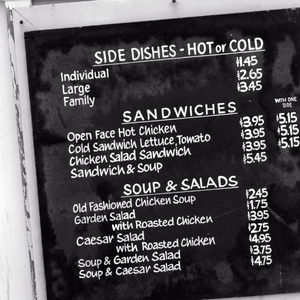As we navigate through 2025, the restaurant industry is evolving to meet new challenges and opportunities. With inflation still affecting operations and consumer spending, restaurant owners and chefs must adopt smart strategies and innovations to remain competitive, profitable, and customer-focused. This year’s trends emphasize agility, tech-savviness, and creative menu planning to help restaurants not just survive but thrive.
Offer Affordable Options
Inflation continues to raise the cost of ingredients, labor, and services. Many restaurants feel the pressure to increase menu prices, which can lead to reduced customer visits. To counter this, smart operators are:
Offering value menu items that are simple, delicious, and cost-effective
Running off-peak specials and loyalty discounts
Using data-driven menu engineering to spotlight high-margin dishes
Tech investments like updated POS systems, inventory tracking, and online ordering platforms are also helping reduce operational inefficiencies. The key is maintaining quality and service while trimming the fat from expenses.
Labor Costs Will Increase Productivity
Labor remains one of the largest expenses in food service. In 2025, many restaurants are responding with both technology upgrades and people-first policies:
Automation & AI: Scheduling tools, smart kitchens, and robotics (like dishwashing or burger-flipping bots) are reducing manual tasks.
Retention Strategies: Health benefits, wellness initiatives, and staff recognition programs are being prioritized to combat high turnover rates.
Continuous Training: Keeping staff trained on menu updates, tech tools, and customer service enhances productivity and job satisfaction.
Smaller Menus & Dynamic Pricing
With costs fluctuating, many restaurants are implementing dynamic pricing models and tight, rotating menus:
Dynamic Pricing allows operators to adjust prices based on time of day, ingredient cost, or customer demand similar to airline pricing.
Seasonal Menus cut down on inventory waste, simplify sourcing, and excite returning guests.
Smaller menus also improve kitchen efficiency and prep consistency, resulting in better guest satisfaction.
Ghost Kitchens To Continue Facing Hard Times
While traditional ghost kitchens have seen a decline, 2025 brings new life to the model:
Hyperlocal concepts are thriving—think niche cuisines for specific neighborhoods.
Shared spaces with low overhead help pop-ups and small brands test new markets.
Multi-brand kitchens with a unified vision are outperforming generic setups.
Instead of trying to compete with delivery giants, successful ghost kitchens are offering unique, experience-rich delivery options, like curated meal kits or chef-led livestream cooking demos.
Combatting Supply Chain Shortages with Flexibility
Ingredient shortages persist, pushing restaurants to innovate:
Ingredient swaps (e.g., using seasonal produce or alternative grains)
Cross-utilization of ingredients across multiple dishes
Forging relationships with local farms and co-ops for fresher, more reliable supplies
A flexible mindset paired with proactive menu planning can reduce vulnerability and increase sustainability.
Smarter Tech For A Better Guest Experience
Customers now expect convenience, customization, and contactless service. Restaurants are responding with:
QR code menus and table-side mobile ordering
AI-powered personalization through loyalty apps
Kitchen display systems (KDS) that reduce ticket times and boost order accuracy
Quick List: What’s In & What’s Out in 2025
Trending:
Seasonal and local ingredient swaps
Dynamic pricing and leaner menus
Tech-powered labor management
Personalized dining experiences
Fading:
Static menus with long ingredient lists
Pandemic-only offerings (e.g., contact-sealed utensils)
Basic ghost kitchens with no brand identity
Step Up Your Game
2025 is a year of resilience and reinvention for the restaurant industry. By adopting dynamic pricing, embracing tech, prioritizing staff engagement, and engineering menus for both flavor and profit, restaurants can weather inflation and even grow during turbulent times.









